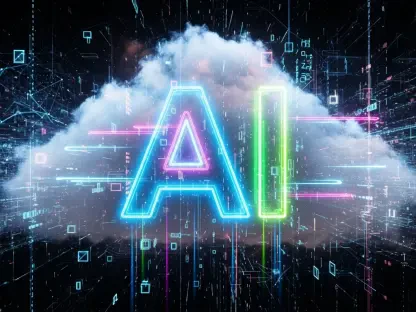The intersection of generative AI and the software testing industry is a hot topic, as AI’s potential to revolutionize software quality assurance (QA) becomes increasingly clear. The current state of AI adoption, its benefits, challenges, and future potential all create a nuanced picture of this technological evolution. From early-stage adoption to job security concerns, AI’s role in the software testing industry presents both opportunities and anxieties. The adoption of generative AI in software testing, while promising, also brings into focus a variety of concerns from industry professionals, including the significant divide between hype and reality, skepticism due to past automation efforts, and potential impacts on job security. However, the potential for AI to enhance rather than replace human testers opens new avenues for the industry.
Early Stage of Generative AI Adoption
Despite the hype, generative AI’s adoption in software testing remains in its infancy. Many QA professionals acknowledge the gap between the promised revolutionary impact and actual implementation in workflows. This early stage of adoption reflects the cautious approach of many organizations who prefer to wait for proven results before fully integrating AI tools into their testing procedures. AI solution vendors often tout their products as game-changers, yet these claims sometimes fall short when applied in real-world scenarios. The enthusiasm for generative AI stems from its potential to handle repetitive, mundane tasks, thus freeing testers to focus on more critical aspects of software development. However, the gap between potential and reality means many testers still navigate their workflows without significant AI interventions.
The development of generative AI is undeniably impressive, but the lag in widespread adoption indicates the complexity of integrating such advanced tools into existing systems. Companies often approach these innovations with measured steps, favoring a wait-and-see attitude over immediate implementation. This cautious perspective is not without merit, as the risks and uncertainties associated with new technology are plentiful. Yet, the growing interest and incremental pathways being explored signal that generative AI is on the cusp of transforming the software testing landscape, once these tools can prove their reliability and efficacy in various testing environments.
The Promises and Skepticism of AI in Testing
Considerable skepticism exists among software testers regarding the promises of AI. This skepticism is rooted in past experiences where revolutionary claims about automation tools did not deliver. Vendors have historically promised that test automation would eliminate manual testing inefficiencies with a simple push of a button, but these expectations have often not been met, which fuels doubt about current AI solutions. This doubt is not unfounded. Many testers have seen flashy demos that fail to translate into daily benefits. Consequently, professionals are wary of investing too much faith in AI without evidence of long-term, practical advantages. They approach generative AI with a mix of cautious optimism and a healthy dose of skepticism, waiting to see whether these new tools can deliver where previous technologies have not.
To many within the software testing industry, the promises of automating every facet of testing seem too good to be true. History has shown that while automation can certainly aid in efficiency, it has not yet managed to completely eradicate the need for human oversight. This has created a healthy dose of wariness directly attributable to unmet expectations from previous technologies. The lingering question for many testers is whether generative AI can deliver on its promises or if it will become another overhyped tool. In the meantime, this skepticism serves as a cautionary tale, urging professionals to carefully scrutinize AI capabilities and align them with the practical needs of software testing.
Job Security Concerns Among Testers
AI’s rise in the software testing field inevitably brings up concerns about job security. Manual testers faced similar fears with the advent of traditional automation tools. Now, even automation engineers find themselves wondering about their future as AI demonstrates capabilities to perform tasks more efficiently and faster than humans. These concerns are not limited to just job loss but also role evolution. Testers worry about their positions becoming obsolete or drastically changing, necessitating new skills. This uncertainty can lead to anxiety, prompting ongoing discussions about the importance of AI as an enhancement tool rather than a replacement for human testers.
The prospect of AI potentially taking over jobs is unsettling, and it’s a natural reaction for any professional to feel threatened by such advancements. The fear extends beyond losing one’s job to the broader implication of needing to upskill or even completely pivot careers. For testers and automation engineers alike, there’s a real concern that their hard-earned expertise might become redundant. However, proactive adaptation and skill evolution can transform this anxiety into an opportunity. By learning how to work alongside AI tools and leveraging their capabilities, testers can elevate their roles, focusing on tasks that genuinely require human intuition, creativity, and critical thinking.
AI as a Tool for Enhanced Testing
AI’s true potential lies in augmenting the capabilities of human testers rather than replacing them. Generative AI excels in automating repetitive and pattern-based tasks, tasks that do not require the creativity and insight that human testers bring. For example, AI can translate test cases written in natural language, correct grammar, break them into manageable steps, and prepare automation scripts, significantly saving time and effort. By handling such routine tasks, AI allows testers to devote more time to activities that require human ingenuity, such as exploratory testing and critical thinking. These enhancements make AI a valuable tool in the tester’s arsenal, boosting productivity and improving test accuracy without diminishing the need for human oversight and interpretation.
When employed judiciously, AI can optimize a multitude of tasks within the software testing lifecycle. This includes everything from initial test case generation to executing tests and analyzing results. The versatility offered by AI tools can significantly cut down on the manual hours testers spend on mundane tasks, redirecting their efforts towards more complex and higher-value activities. For instance, AI’s ability to identify and track patterns within vast datasets can provide insights that might take a human tester significantly longer to notice. Thus, integrating AI into testing processes does not eliminate the need for human expertise but instead redefines how that expertise is applied, allowing for a more efficient and focused approach to QA.
Reducing Test Flakiness with AI
One significant benefit of generative AI in software testing is its ability to reduce test flakiness. Test flakiness is a common issue where automated tests produce inconsistent results due to changes in the application or testing environment. AI-driven solutions, such as self-healing tests, dynamically adapt to these changes, maintaining test stability without manual intervention. Self-healing tests can identify and address issues in the testing process automatically, saving testers considerable time and reducing frustration. This capability ensures that automated tests remain reliable and effective, even when the underlying software undergoes significant changes.
AI’s self-healing capabilities represent a leap forward in addressing one of the most persistent pain points in software testing: unpredictable test results. By leveraging machine learning algorithms, self-healing tests can detect when changes in the codebase or environment affect test outcomes and adjust accordingly in real-time. This innovation not only minimizes downtime but also enhances the reliability of automated testing suites. As a result, AI helps to maintain a consistent level of quality in testing outputs, drastically lowering the manual efforts testers would otherwise expend in troubleshooting and correcting flaky tests. This improvement in test stability directly translates to more efficient development cycles and higher software quality overall.
Advances in Visual Testing and Error Detection
Generative AI has also made strides in visual testing and error detection. AI-powered visual testing allows for quick comparison of images and identification of discrepancies after code changes. This task, which can be labor-intensive and prone to human error, becomes much more efficient and reliable with AI assistance. AI tools analyze visual elements, detect subtle differences, and highlight potential issues that might be missed during manual testing. This advancement not only improves the accuracy of visual testing but also frees testers to focus on more complex, non-visual aspects of the software, enhancing overall quality.
The ability of AI to scan and compare visual elements with a high degree of precision adds a powerful tool to the software tester’s toolkit. Visual testing often requires a keen eye and significant time commitment, but AI’s capabilities allow for rapid and thorough analysis. By automating this process, teams can quickly identify even minor visual discrepancies that could lead to larger user experience issues if left unchecked. This capacity for detailed visual inspection ensures that the graphical integrity of the software remains intact, which is crucial for user satisfaction and product reliability. Moreover, AI-driven visual testing complements other types of testing, ensuring a holistic approach to software quality assurance.
Real-World Applications and Incremental Benefits
While no AI solution is perfect, numerous incremental gains contribute to the overall efficiency of the software development lifecycle (SDLC). Testers are beginning to implement AI capabilities to streamline workflows and minimize repetitive tasks. These incremental improvements help teams to deliver higher-quality software more quickly and efficiently. Real-world applications of generative AI in software testing demonstrate tangible benefits, gradually shifting perceptions and building trust in AI’s practical value. As more organizations share their success stories and best practices, the apprehension surrounding AI adoption may decrease, leading to broader acceptance and integration.
The utility of AI in real-world scenarios shows that even small enhancements can lead to significant improvements in software testing. These incremental advances, though not spectacular on their own, collectively contribute to optimizing the entire SDLC. Examples include leveraging AI for automated regression testing, bug detection, and even predicting potential problem areas based on historical data. Such applications not only expedite the testing process but also elevate the overall quality and reliability of the software. As more companies publicize these successes, the cumulative evidence will likely diminish skepticism, fostering a more welcoming environment for broader AI adoption across the industry.
Evolution of the Industry
There is a deep-seated skepticism among software testers about the promises of artificial intelligence (AI). This skepticism stems from past experiences where so-called revolutionary automation tools didn’t live up to their hype. Over the years, vendors have assured that test automation would wipe out the inefficiencies of manual testing with just a push of a button. However, these high expectations often fell short, leading to doubt about current AI solutions. Many testers have witnessed impressive demos that failed to provide real, everyday benefits. As a result, they’re cautious about investing undue faith in AI without solid proof of long-term, practical advantages. This cautious optimism is characterized by an eagerness to see if the new tools can succeed where their predecessors failed.
For many in the software testing field, the idea of automating every aspect of testing sounds almost too good to be true. History has shown that while automation certainly boosts efficiency, it has not yet fully eliminated the need for human oversight. This enduring wariness is directly linked to previous technologies not meeting their lofty promises. Many testers are left questioning if generative AI can truly fulfill its claims or if it will just become another overhyped tool. This skepticism serves as a cautionary tale, urging professionals to carefully evaluate AI capabilities and ensure they align with the practical needs of software testing before fully committing.









